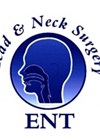Events
Ear Wax Removal (Aural Care) - November
Newbury, UK
Winter Days of Laryngology
Crans Montana, Switzerland
EROC 2026
Dubai, UAE
The EROC GLOBAL FORUM celebrates its landmark 15th edition, reaffirming its status as one of the world’s leading congresses in rhinology, otology and head and neck specialties.Over the past decade and a half, EROC has evolved into a premier hub...
BSA Certificate in Otoscopy 2026 (Jan)
Newbury, UK
ENT UK ST3 Accelerated Learning Course Bootcamp 2026
Manchester, UK
20th ‘Anniversary’ National ENT Masterclass®
London, UK
The faculty this time consists of some of the leading stars of ENT in the UK, including eleven past-presidents of the Royal Society of Medicine ENT sections. The programme includes 32 state-of-the-art lectures and three panel discussions on a range of topics in otolaryngology and head & neck surgery.
Head and Neck Dissection Course Jan 26
Glasgow, UK





